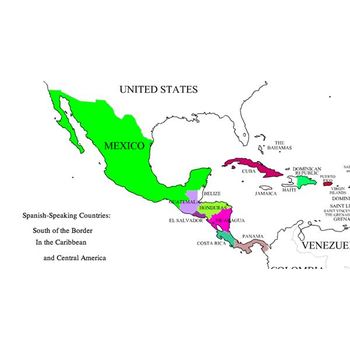


Germany, divided into American, British, French and Soviet zones, subsisted on American humanitarian aid. In mid-1947, two years after the Nazi surrender, Europe’s economies were still in ruins. To understand why it is worth trying to help Ukrainians rebuild, it helps to consider how difficult the Marshall Plan actually was. And though the plan was a success in West Germany, its results in some other countries were mediocre. Only the threat of communism persuaded all sides to overcome their qualms. European governments and voters were suspicious of the conditions attached to the aid.
LESSON PLAN KNOW A IPANIC COUNTRY HOW TO
There was bitter disagreement within America’s government over how to structure the programme, and within Congress over whether to fund it at all. “There were real strains within, real difficulties, moments when it might have collapsed,” she says. Although the Marshall Plan is now remembered as a success, things were complicated at the time, says Margaret MacMillan, a historian at Oxford. It seems plausible that Ukrainians can recreate what they had before and, with help, improve on it. Ukraine was a democratic and fairly sophisticated middle-income country before the war, and making efforts to tackle graft. Ukraine is more like post-war Europe, where an injection of funds helped locals rebuild prosperous, industrialised societies that they already knew how to build, because they had built them before war wrecked them. There, donors were trying to impose a completely new system of government, which many locals resisted. This is a big worry for Ukraine, long one of Europe’s most corrupt countries.īut Ukraine is not like Afghanistan or Iraq. Donors in those places failed to help create functional states, and much of their cash was stolen. Sceptics of reconstruction aid to Ukraine note that such funds did little good in war-ravaged Afghanistan and Iraq, or in disaster-struck Haiti. Only now are the main donors planning regular meetings to co-ordinate. For the war’s first eight months pledges came sporadically. In Ukraine aid has come mainly from America, but also from the EU, individual European and Asian countries and an array of multilateral institutions-the World Bank, the IMF, the European Bank for Reconstruction and Development, the European Investment Bank and others. The Marshall Plan’s money came from America. With the war slashing tax revenues and half of the government’s budget devoted to the army, Ukraine needs $3.5-5bn in aid every month just to cover its budget deficit.Īnother problem is complexity. That makes attracting private money almost impossible, for now: foreign investment into Ukraine is barely 1% of its level in 2021. Unlike the Marshall Plan, which started years after the war ended, aid to Ukraine is flowing while the shells are still flying. Indeed, in some ways rebuilding Ukraine seems harder. Recovering from all this, Ukraine’s allies think, will require aid comparable to the Marshall Plan, the huge American programme that kickstarted Europe’s economic recovery from the second world war. Since then the bill has risen: for the past month Russian missiles have been smashing up the power grid. Counting only the damage done before June 1st, the World Bank estimated the costs of reconstruction at $349bn. Ukraine’s government reckons GDP in 2022 will be 30% lower than in 2021. Some 8m people, a fifth of the population, have fled the country. Yet the destruction Vladimir Putin has wrought is immense. Steel plants pour white-hot metal to make rebar restaurants serve food to the noise of air-raid sirens. Ukrainians are scrambling to repair what Russia has broken and to keep the economy running. Ukraine, like Mr Tkachenko’s farm, is in a state of buzzing confusion.
LESSON PLAN KNOW A IPANIC COUNTRY FREE
Most of Mr Tkachenko’s fields were free of mines, his wheat, corn and sunflower crops had been harvested, his grain elevator had been fixed and his remaining cows were chomping away in their pens. In a vast concrete storage shed, forklifts stacked crates of potatoes while workers supervised machines that use lasers to sort the spuds by size. Yet by mid-October the farm, in Lukashivka, 120km north of Kyiv, was bustling again.


 0 kommentar(er)
0 kommentar(er)
